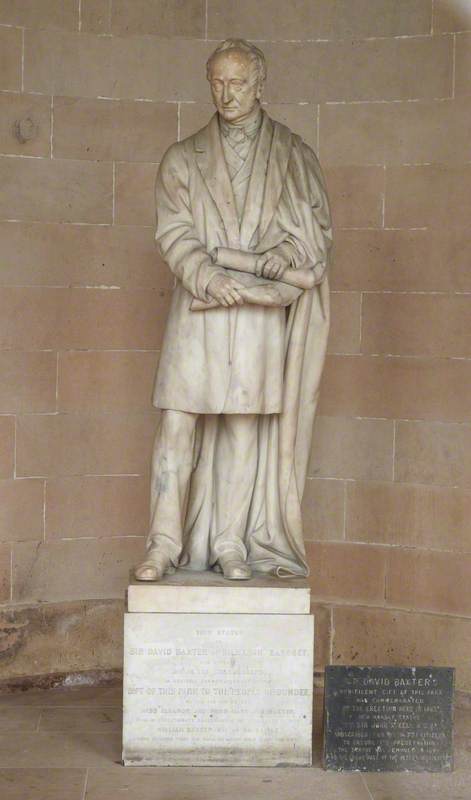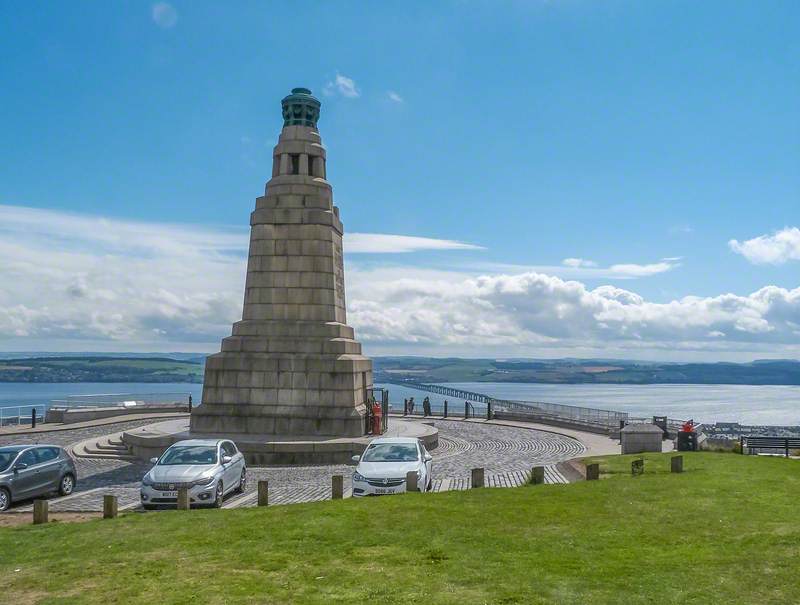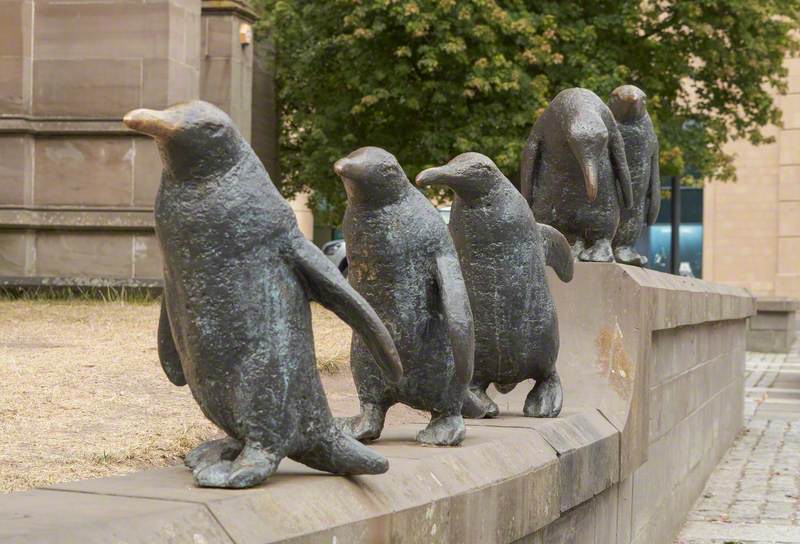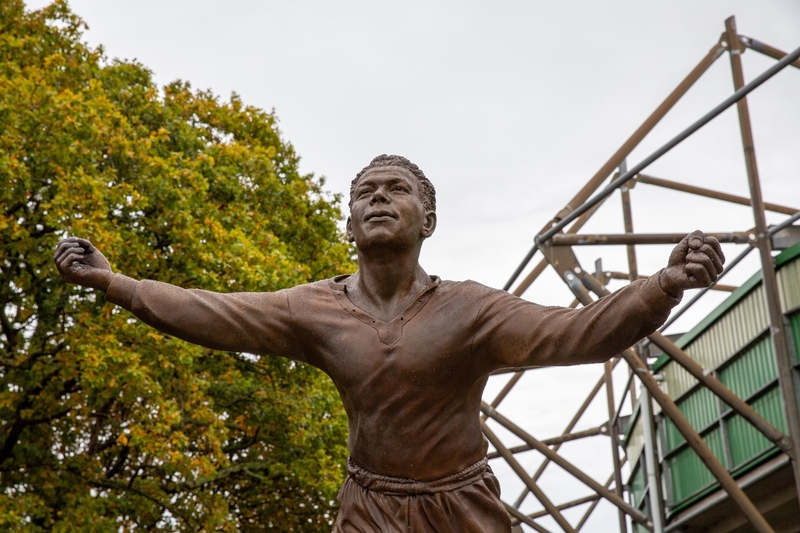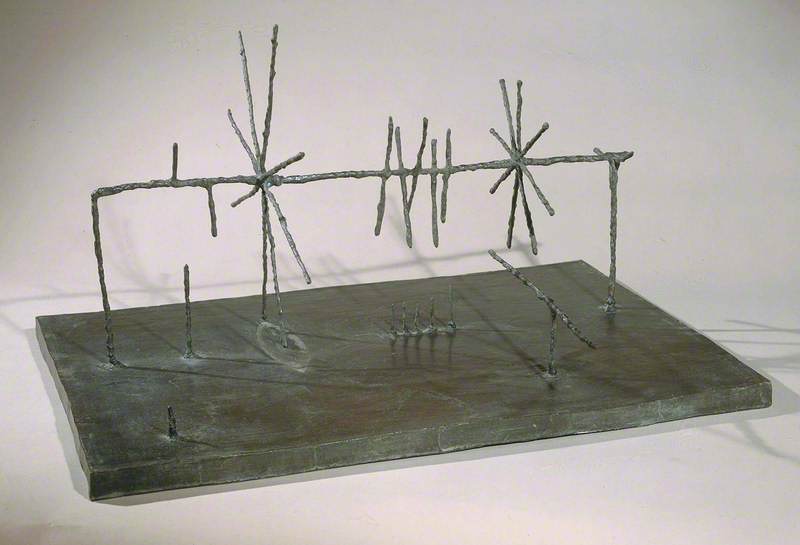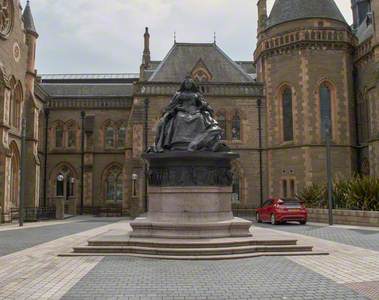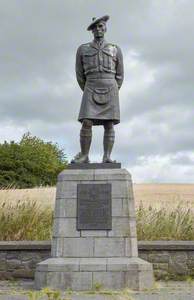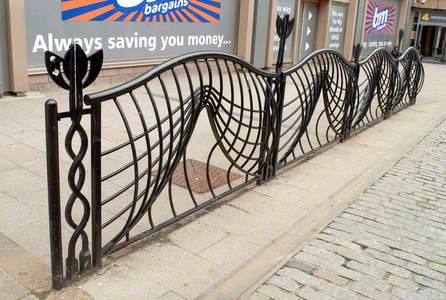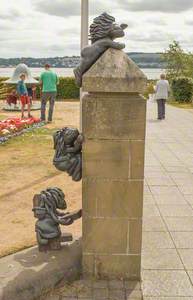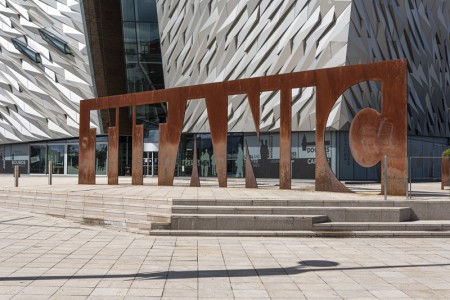Dundee has an exceptional collection of over 500 pieces of public art, which played an important role in it being awarded UNESCO City of Design status in 2014. Public sculpture has been a vital part of the city's cultural regeneration, with many pieces achieving iconic status. Here is a chronological selection of some of Dundee's most significant landmarks.
The first statue of a notable Dundonian came following the gift of Baxter Park to the people of Dundee by linen magnate David Baxter and his sisters. Baxter's statue was made by one of Scotland's leading sculptors, John Steell, who had spent much of his childhood in Dundee. It was funded by public subscription, with much of the money coming from the thousands who worked in his mills.
The first woman to be honoured with a statue in Dundee was, unsurprisingly, Queen Victoria, commissioned from English sculptor Harry Bates to mark her Diamond Jubilee in 1897. His depiction of her was controversial, with many feeling this was too realistic and unflattering a portrayal, raising an important debate about what the role of such statues was – to show people as they were or as they ideally should be?
Dominating the city's skyline, the massive granite war memorial on top of Dundee Law can be seen for miles around. The decision to site it there was a controversial one, however, with many preferring a site in the city centre that could be more easily visited by grieving relatives. The simple but elegant design was the result of a nationwide competition, and incorporates a beacon which is still lit on Armistice Day and other key anniversaries.
Between the 1930s and the 1970s, the fashion for public sculpture declined and only a handful of new works were commissioned. Perhaps the most important was the monument to the Dundee and Angus battalions of the Black Watch. Scott Sutherland was Head of Sculpture at the city's art college for many years, and is best known for the Commando Memorial at Spean Bridge.
The turning point for public sculpture in Dundee came in 1982 with the establishment of the pioneering Blackness Public Art Programme. The Blackness area had once been densely populated with jute mills but, with the industry in terminal decline, most of the buildings were empty and decaying. The area was designated as Scotland's first Industrial Improvement Area and public art was an integral part of the regeneration of the area. Donnelly's panels were a notable example of the many works commissioned, and won a Saltire Award in 1983.
The Blackness project was so successful that in 1986 it became the Dundee Public Art Programme, Scotland's first city-wide public art scheme. Annand created this work for the entrance to the new Technology Park, and the Royal Society of British Sculptors named it the best piece of sculpture outside London in 1987.
The Dundee Public Art Programme was fully integrated into wider landscaping and redevelopment initiatives, including the pedestrianisation of the city centre. As part of this, David Findlay Wilson, a graduate of the pioneering MA Public Art & Design course at Duncan of Jordanstone College of Art, was commissioned to create a suite of street furniture, including bollards, railings, benches and information boards. The designs are all based on lily buds and twists of jute.
Inspired by a local legend, Alastair Smart (a sculptor tutor at Duncan of Jordanstone College of Art) was commissioned to create this dragon sculpture, a favourite with Dundee children. Tragically he died before the work could be carried out, but one of his students, Tony Morrow, finished the piece based on his maquette.
Desperate Dan, Dawg and Minnie the Minx
2001
Anthony Morrow (1954–2021) and Powderhall Bronze (founded 1989) and Susie Paterson (active c.2001) 
Perhaps Dundee's most famous role is as the home of British comics, with publishers D. C. Thomson & Co. responsible for The Beano, The Dandy, Bunty, Commando and many more over the years. It was only a matter of time before some of their iconic characters were immortalised in bronze. Some of David Findlay Wilson's street furniture can also be seen here.
Dundee is renowned for polar exploration and building the ships that took Scott and Shackleton to the South Pole. This was the inspiration behind Angela Hunter's parade of penguins, who have become the city's most popular pieces of sculpture. Regularly dressed up by members of the public, they even have their own Facebook page!
Sited outside a multi-storey car park, this intriguing sculpture is made from a special catalytic compound which absorbs pollutants from cars and converts them into harmless nitrates which drain off into the soil. This was the first time the material had been used in the UK and the perfect example of art literally improving our lives!
Computer games are one of Dundee's leading creative industries and this popular piece of art honours the creation of the hugely successful videogame Lemmings by DMA Design Limited in Dundee in 1991.
This memorial in Lochee (former home of Camperdown Works, the world's largest jute mill) honours the many thousands of women and children who worked in the jute industry in the nineteenth and twentieth centuries. The two figures were based on local residents, while the text features poems by Mary Brooksbank and Ron Hutcheson.
Matthew Jarron, author and curator
